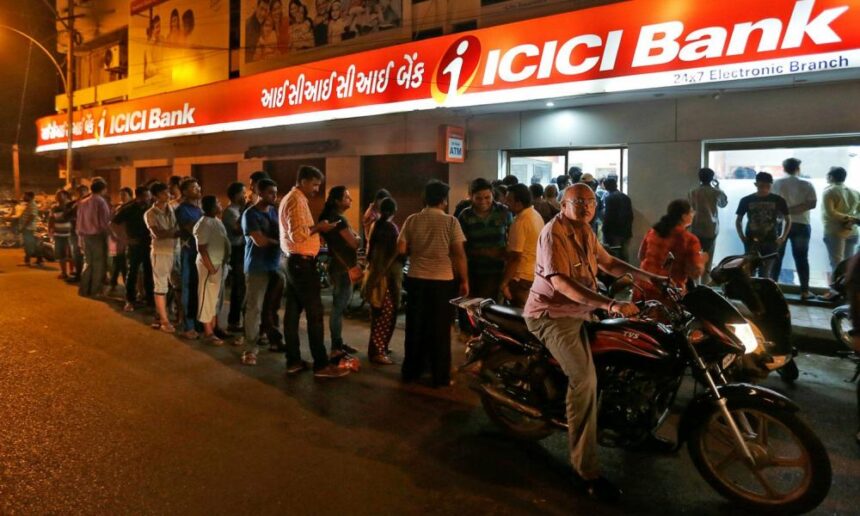I landed at Indira Gandhi International Airport in the early hours of last Wednesday, and exchanged some dollars for rupees as soon as I entered the arrivals lounge. It was only after I checked into my hotel that I realized the twelve 1,000 INR notes that I had just exchanged were basically rendered invalid. This is how I came across the Indian government under Prime Minister Modi doing what Mongolia did 25 years ago with Government Resolution No. 20. This resolution involved measures to transition into a market economy and resulted in price liberalization for most products, but doubled the prices of products that were not regulated.
The Arthashastra is an ancient Indian treatise written in Sanskrit between the 2nd century BC and 3rd century AD. It says that the development of a country is only achieved when law, economics, and government are functioning in concert. Scholars from more than 60 countries gathered to study the change India is making to its education policy, yet we ended up becoming witnesses to India’s sudden demonetization policy.
This was a historical day, when Indians tackled dirty money and Americans voted for their next president.
NEW CHALLENGES IN EDUCATION
Prime Minister Modi set out an objective to make India a strong global economy. India ranks seventh in the world in terms of size, and only China has a bigger population. India’s population is projected to surpass China’s in 2022. Although the Indian economy ranks seventh globally, they are third in terms of purchasing power parity (8.7 billion USD). India’s GDP per capita has reached 1,700 USD.
As its median age has reached 28, India now has the youngest population in the world. This translates to a need to provide 18 million people with jobs over the next 15 years. While India’s workforce is as large as 500 million, their total annual intake for professional training and education is only 4.4 million, compared to 90 million in China and 11 million in the United States.
In order to build a strong global economy, India’s Ministry of Human Resource Development has rolled out a new program that supports new initiatives to effectively link higher education with research and development work at all levels. In cooperation with the United States, the United Kingdom, Australia, and Canada, they have established several funds. India named this initiative “Make in India”, and set forth a goal to ensure that the value chain of products sits entirely in India. They have deliberately avoided the term “Made in India”, as it could mean importing equipment parts and assembling the product in the country.
In order to achieve this goal, India has started transitioning its education system from the second industrial revolution, which was based on using electric power for mass production, to become a part of the fourth industrial revolution, which builds on the IT-based third revolution and links the physical, digital, and biological spheres.
India has selected the best location to provide a high quality education in English, and their universities have become globally competitive and collaborative. This initiative, “Learn in India”, is devised to make quality improvements to India’s education system. Although the number of universities and the quality of their services have grown over the last 10 years, India is still not capable of meeting the increasing demand. Therefore, this policy is aimed at making their universities compete with each other in preparing a skilled workforce, leveraging technological advances and being based on creativity rather than traditional, strict teaching practices.
India has set out an objective to have 20-25 of their universities included on the list of the world’s top 500 universities published by The Times Higher Education magazine by 2030. Currently, India receives approximately 30,000 international students every year, while 300,000 Indian students go abroad to acquire an education.
INDIA’S RESOLUTION NO. 20
In his fight against corruption and dirty money, Prime Minister Modi has suddenly started replacing rupee notes. The 1,000 INR and 500 INR notes were rendered invalid starting at midnight on November 8. These two notes account for approximately 80 percent of all notes in market circulation, and equal 10 percent of GDP. Therefore, it is a major change. Indian people are filling out forms and exchanging these notes for new notes (up to 4,000 INR per day) throughout the country until December 30, 2016.
Due to this sudden change in monetary policy, people whose transactions are cash-based (small business owners, farmers, and people who get their wages paid on a daily basis) are the hardest hit, as some of them have had to suspend their businesses.
There has been a shortage of cash at banks and ATMs all over the nation as thousands of people queue to get their notes replaced. It led to a widespread panic, which resulted in some deaths.
As reported by the Hindustan Times, a woman committed suicide after she received misleading information and believed that the money she was storing (125,000 INR/2,000 USD) was “as good as waste paper”. She had sold her land, spent money on medical treatment for her husband, and kept the rest of the money in the denominations of 1,000 and 500 INR.
In the last two and half years, Prime Minister Modi fought ferociously against corruption. As a result, it was discovered that cash totaling eight percent of all money in circulation was being stashed. Within this time period, India fell to 76th from 100th in terms of corruption on a global index. World Bank reports that the current circulation of India’s black market equals 25 percent of GDP. Also, D.Bhargava, an Asia Economist at Credit Suisse, has said that only one percent of India’s population pays taxes.
Work is underway to take away the value of cash illegally obtained by criminal organizations, drug and weapons dealers, extremist groups, and others who have broken the law to become wealthy. It was reported in the media that 500 INR notes were found floating in the Ganges River. In the last few days, there has been increased use of credit and debit cards, as well as online transactions.
People are seeing the demonetization initiative in many different lights. Some sources say that Prime Minister Modi’s intention is to cut funding for the Congress Party, which was supposedly collecting cash in tons, ahead of the elections next year. Arvind Kejriwal, Chief Minister of Delhi and Leader of the Aam Aadmi Party, demanded that Prime Minister Modi release the names of 648 Indians who own wealthy accounts at Swiss banks and to fight corruption.
It was hard not to feel sorry for the people who were standing in long bank queues for many hours on the streets of Delhi, where the air pollution is extremely high.
Foreign citizens were able to exchange old notes for brand new 2,000 INR and 100 INR notes (up to 4,000 INR/75 USD) after filling out a form. While I did not have too much trouble exchanging the notes at a small currency exchange office at Ashok Hotel, the Indian people were standing in long queues having to exchange their notes within 50 days, and only being able to collect 4,000 INR a day.
New Delhi, 2016.11.16
Trans. by B.Amar












